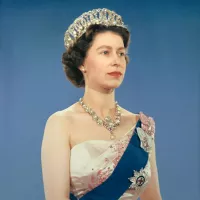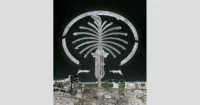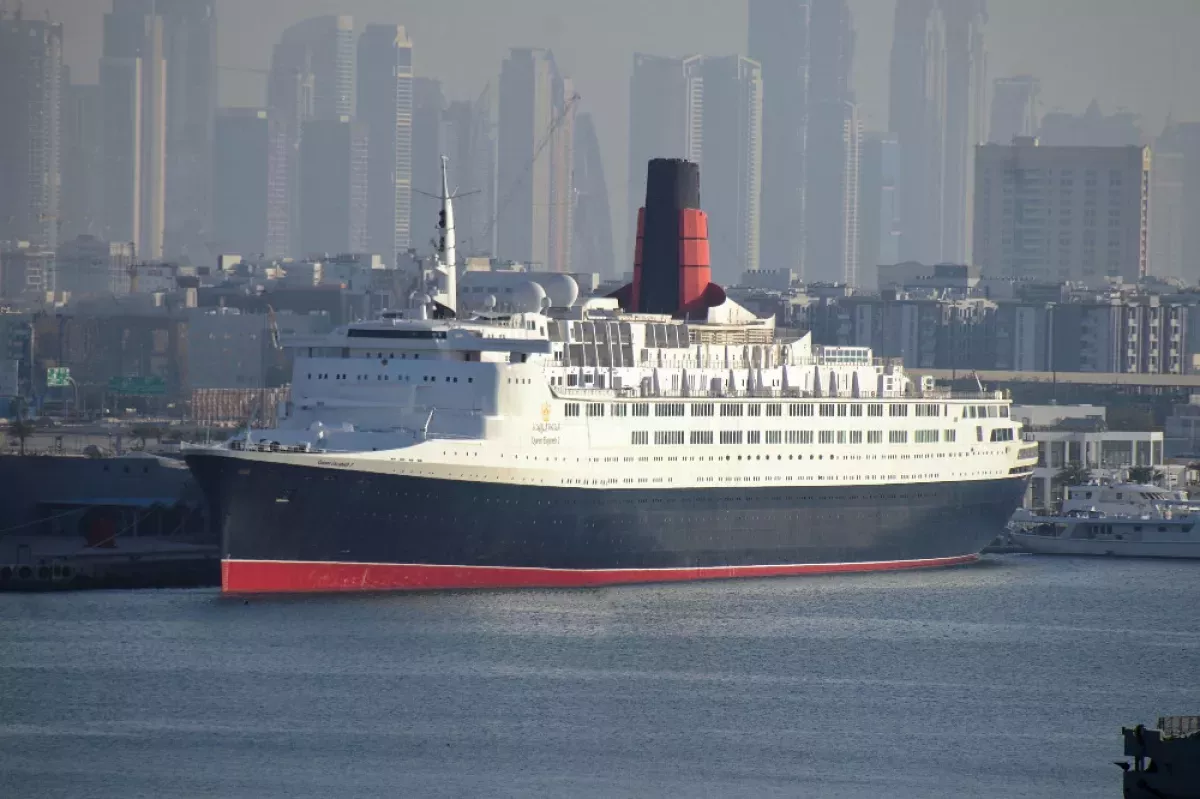The Queen Elizabeth 2 (QE2), a retired British passenger ship, is now a floating hotel in Dubai. Built for the Cunard Line, it served as both a transatlantic liner and cruise ship from 1969 to 2008. After a period of layup, the QE2 was converted and began operating as a hotel on 18 April 2018.
1906: Legacy Items from RMS Mauretania
The Queen Elizabeth 2 showcased a brass relief plaque with a fish motif from the first RMS Mauretania (1906), connecting the ship to Cunard's legacy.
1906: Launch of the First RMS Mauretania
The launch of the first RMS Mauretania in 1906 marked a significant moment for Cunard, with the ship becoming a symbol of speed and luxury in transatlantic travel.
1934: Naming of Queen Mary
The Queen Mary, launched in 1934, was named after Mary of Teck, the wife of the reigning King George V.
1935: Scrapping of the First RMS Mauretania
The first RMS Mauretania, after a glorious career, was scrapped in 1935, paving the way for a new generation of ocean liners.
1938: Artwork from RMS Mauretania
A bronze sculpture called "Spirit of the Atlantic" from the second RMS Mauretania (1938), designed by Barney Seale, was displayed on the Queen Elizabeth 2's "2" Deck.
1938: Launch of the Second RMS Mauretania
Cunard launched the second RMS Mauretania in 1938, continuing the legacy of the name after the first Mauretania (1906) was scrapped in 1935.
1938: Naming of Queen Elizabeth
Following the tradition of naming ships after the Queen Consort, the Queen Elizabeth was named in 1938 after Elizabeth Bowes-Lyon, wife of King George VI.
1941: World War II Troop Ships
In 1941, during World War II, the original Queen Mary and Queen Elizabeth served as troop ships.
1957: The Rise of Air Travel
By 1957, air transit began to overshadow transatlantic sea travel due to its speed and affordability, leading to a decline in passenger numbers for ocean liners.
1958: The Jet Age Takes Flight
The debut of the Boeing 707 and Douglas DC8 in 1958 further accelerated the rise of air travel, as jets offered faster, non-stop transatlantic flights.
October 1961: Project Cancellation Rocks Cunard
On October 19, 1961, Cunard faced a major setback when a project, which had progressed to the point of shipyard submissions and government funding applications, was abruptly cancelled due to executive misgivings and shareholder dissent.
1961: QE2 Begins Transatlantic Crossings
The Queen Elizabeth 2 started her regular transatlantic crossings in 1961.
December 1964: Construction Order for QE2
On December 30, 1964, Cunard officially ordered the construction of the Queen Elizabeth 2 from John Brown and Company, marking the beginning of a new era for the renowned shipbuilding firm.
July 1965: Keel Laying on Historic Slipway
On July 5, 1965, the keel of the Queen Elizabeth 2, designated as hull number 736, was laid down on the same slipway at John Brown and Company's shipyard where iconic Cunard liners like Lusitania, Aquitania, Queen Mary, and Queen Elizabeth had been built.
1965: Financial Difficulties and Sale of Ships
Cunard faced increasing financial difficulties in 1965 due to competition from airlines, leading to the sale of several ships, including the Mauretania, Sylvania, Carinthia, Caronia, Queen Mary, and Queen Elizabeth.
1966: Seamen's Strike Adds to Financial Strain
A seven-week-long seamen's strike in 1966 further impacted Cunard's income, exacerbating their financial challenges.
September 1967: Government Loan Secures Completion Funds
In September 1967, facing financial struggles, Cunard secured an additional loan of £3 million from the government to complete the Queen Elizabeth 2, increasing the total loan amount to £24 million.
September 1967: Launch by Queen Elizabeth II
On September 20, 1967, Queen Elizabeth II launched the Queen Elizabeth 2, using the same gold scissors used by her mother and grandmother for the Queen Elizabeth and Queen Mary.
1967: QE2 Launched
The Queen Elizabeth 2 was launched in 1967, while the original Queen Elizabeth was still in service.
May 1968: QE2 Delivery Date
The agreed-upon delivery date for the Queen Elizabeth 2, as per the contract with John Brown and Company, was set for May 1968.
November 1968: Departure from John Brown's and Transfer to Southampton
In November 1968, the Queen Elizabeth 2 left John Brown's shipyard and was moved to Southampton for completion of work by Vosper Thorneycroft due to industrial disputes and delays at the Clydebank shipyard.
November 1968: Sea Trials Commence
The Queen Elizabeth 2 began her sea trials in November 1968 in the Irish Sea, including speed trials off the Isle of Arran.
1968: Construction Delays and Design Changes
Construction delays of the Queen Elizabeth 2 pushed the delivery date, causing Cunard to miss the 1968 peak summer transatlantic season. In response to market research, Cunard decided to change the ship's design to a two-class arrangement.
1968: Advanced Yet Fuel-Consuming Engines
Despite being technologically advanced and fuel-efficient for their time, the Queen Elizabeth 2's steam turbines, commissioned in 1968, consumed a considerable 600 tons of fuel oil daily, which became a concern by the 1980s.
1968: QE2 Name Displayed
Upon leaving the shipyard in 1968, the Queen Elizabeth 2 prominently displayed the name "Queen Elizabeth 2" on her bow, solidifying her identity.
April 1969: Delayed Handover and Shakedown Cruise
The handover of the Queen Elizabeth 2 was delayed until April 1969 due to a resonant vibration issue discovered during sea trials. After repairs, the ship departed on a shakedown cruise to Las Palmas on April 22, 1969.
May 1969: Maiden Voyage to New York
The Queen Elizabeth 2 embarked on her maiden voyage from Southampton to New York in May 1969, completing the journey in 4 days, 16 hours, and 35 minutes.
1969: Authorized History Published
An authorized history of the Queen Elizabeth 2, offering insights into her creation and early years, was published in 1969.
1969: QE2 Takes the Helm as Cunard's Flagship
In 1969, Queen Elizabeth 2 assumed the prestigious role of Cunard's flagship, a testament to her grandeur and significance within the fleet.
1969: QE2's Interior Design Reflects a New Era
In 1969, Queen Elizabeth 2 embraced a modern aesthetic, departing from the Art Deco style of her predecessors and incorporating materials like laminates, aluminium, and Perspex in her interior design.
1969: The Synagogue: A Timeless Sanctuary
Since Queen Elizabeth 2's maiden voyage in 1969, her synagogue remained a constant, serving as a place of worship and reflection for passengers throughout her service years.
1969: QE2 Enters Service
The Queen Elizabeth 2 began her official service for Cunard in 1969, marking a new chapter in the company's history.
1969: The Commencement of QE2's Reign
The Queen Elizabeth 2 commenced her service as a transatlantic liner and cruise ship in 1969, marking the beginning of a remarkable career in maritime history.
1971: Passenger Rescue and Jellyfish Incident
In 1971, the Queen Elizabeth 2 participated in a rescue operation, saving approximately 500 passengers from the burning French Line ship Antilles. Later that year, the ship experienced a temporary shutdown when jellyfish clogged its seawater intakes.
May 1972: Bomb Threat and Security Search
A bomb threat targeted the Queen Elizabeth 2 in May 1972 during a voyage from New York to Southampton. A thorough search by the crew and a specialized security team found no bomb, leading to the hoaxer's arrest.
1972: Transformation of the Observation Bar
During the 1972 refit, Queen Elizabeth 2's Observation Bar on Quarter Deck, which offered panoramic views over the ship's bow, was transformed into galley space.
1972: The Introduction of Penthouse Suites
In 1972, Queen Elizabeth 2 embraced innovation by adding penthouse suites with balconies, becoming one of the first ships to offer such luxurious accommodations since the Normandie in the 1930s.
1974: SS France Withdrawn from Service
The SS France was withdrawn from service in 1974, leaving the Queen Elizabeth 2 as the largest operational passenger ship for a few years.
1975: A Silver Tribute: Asprey's Model of QE2
In 1975, Asprey of Bond Street crafted a magnificent solid silver model of Queen Elizabeth 2, a testament to the ship's grandeur and a symbol of her enduring legacy.
July 1976: Engine Room Fire Disrupts Voyage
In July 1976, a fire broke out in the engine room of the Queen Elizabeth 2 due to a mechanical failure. The fire was contained, but the ship had to return to Southampton for repairs, highlighting the challenges of maintaining such a complex vessel.
1977: Expanding Luxury: More Suites with Balconies
Continuing its commitment to luxury, Queen Elizabeth 2 expanded its balcony suite offerings in 1977, further enhancing passenger experience and setting new standards in maritime accommodations.
1978: Financial Performance and Maintenance Strategies
By 1978, the Queen Elizabeth 2 was breaking even with high operating costs, leading to strategies to maximize time at sea and minimize downtime for repairs.
1979: Gifts from Japan and Lord Wedgwood
During her 1979 world cruise, the Queen Elizabeth 2 received notable gifts: a set of antique Japanese armor from the Governor of Kagoshima, Japan, and a Wedgwood vase from Lord Wedgwood.
May 1982: Requisitioned for Falklands War
In May 1982, the Queen Elizabeth 2 was requisitioned by the British government to serve as a troop carrier during the Falklands War.
May 1982: Conversion for Wartime Service
Preparations for the Falklands War in May 1982 involved converting the Queen Elizabeth 2 for military use, including adding helicopter pads, creating dormitories, and reinforcing the hull.
May 1982: Departure for the South Atlantic
The Queen Elizabeth 2, carrying 3,000 troops, departed for the South Atlantic in May 1982 to support the Falklands War effort.
June 1982: Return from War Zone
The Queen Elizabeth 2 returned to the UK in June 1982 after her service in the Falklands War, receiving a warm welcome upon her arrival.
August 1982: Return to Passenger Service
Following her conversion back to passenger service and a change in her funnel's color scheme, the Queen Elizabeth 2 resumed service in August 1982.
November 1983: Boiler Issues and Cruise Cancellation
Mechanical problems, including boiler issues, resurfaced after an overhaul in November 1983, leading to a cruise cancellation.
1983: QE2 Returns to Tradition
After her service in the Falklands War in 1983, Queen Elizabeth 2's funnel was repainted in the traditional Cunard orange and black, with black "hands," marking a return to the line's iconic livery.
1983: Hull Repainting and Magrodome Installation
The Queen Elizabeth 2's hull color was reverted to traditional colors in 1983 after an unpopular change. Later that year, a magrodome was installed over the quarterdeck pool.
October 1984: Electrical Fire Causes Power Outage
An electrical fire caused a complete power loss on the Queen Elizabeth 2 in October 1984, delaying the ship for several days.
October 1986: Major Refurbishment and Conversion to Diesel Power
From October 1986 to April 1987, the Queen Elizabeth 2 underwent a significant refurbishment, including a conversion from steam power to diesel, aimed at improving efficiency and extending her service life.
1986: QE2's Funnel Transformation
During her extensive 1986 refurbishment, Queen Elizabeth 2's original narrow funnel was replaced with a larger one, constructed using steel panels from the original, symbolizing a blend of modernization and heritage.
1986: A Modern Makeover for QE2
In 1986-1987, Queen Elizabeth 2 underwent a significant refit, replacing her steam powerplant with a modern diesel engine, enhancing her efficiency and performance.
1986: Engine Replacement Begins
Starting in 1986, the Queen Elizabeth 2 underwent a significant refit where its steam turbines were replaced with a modern diesel-electric propulsion system.
April 1987: Refurbishment Completed
The extensive refurbishment of the Queen Elizabeth 2, costing over £100 million, was completed in April 1987, marking a new chapter in the ship's operational history.
1987: QE2 Refurbishment and Tapestry Mishap
During the 1987 refit of the Queen Elizabeth 2, the three custom-designed tapestries by Helena Hernmarck were mistakenly cleaned improperly, resulting in the loss of much of the golden threads.
1987: Modernized Propulsion System
In 1987, the Queen Elizabeth 2's refit concluded with the successful installation of nine German MAN diesel engines and a new diesel-electric propulsion system, greatly enhancing its efficiency.
1990: QE2 Naming Accounts
In 1990, accounts emerged suggesting that Cunard had initially intended to name the ship "Queen Elizabeth" and that the addition of "2" by the Queen during the launch ceremony was unexpected.
1991: Ongoing Debate on QE2's Name
The debate regarding the intended recipient of the Queen Elizabeth 2's name continued in 1991, with some accounts contradicting the official Cunard stance.
August 1992: QE2 Grounding Incident
In August 1992, the Queen Elizabeth 2 sustained significant damage to her hull when she ran aground near Martha's Vineyard due to a combination of excessive speed, an uncharted shoal, and an underestimated draft.
1994: Heritage Trail Introduction
In 1994, QE2 introduced the 'Heritage Trail,' a collection of classic Cunard artifacts displayed onboard the ship. This trail offered passengers a glimpse into the rich history and heritage of the Cunard Line.
1994: Project Lifestyle Refurbishment
In 1994, the QE2 underwent a major refurbishment project in Hamburg, dubbed "Project Lifestyle," aimed at modernizing the ship's features and appearance.
1994: Aft Decks Redesigned
Queen Elizabeth 2 underwent significant structural modifications in 1994, including the removal of the magrodome and the redesign of the aft decks, optimizing space and functionality.
1994: A Return to Traditional Elegance
Queen Elizabeth 2's 1994 refit marked a return to traditional elegance, with many of her original modern decor elements replaced by designs inspired by Cunard's classic ocean liners.
September 1995: Encounter with Rogue Wave
In September 1995, the QE2 encountered a massive rogue wave generated by Hurricane Luis in the North Atlantic, demonstrating the ship's resilience in extreme weather conditions.
1995: Project Genesis: A New Chapter in Ocean Liners
With the acquisition of Cunard by Carnival, "Project Genesis" was announced in 1995, aiming to revitalize the ocean liner industry and pave the way for a new era.
1997: Rediscovering a Treasure
A photograph discovered in 1997 led to the rediscovery of the long-lost solid silver model of Queen Elizabeth 2, crafted by Asprey of Bond Street in 1975, adding to the ship's rich history and allure.
1998: Acquisition by Carnival Corporation
In 1998, Carnival Corporation acquired the Cunard Line, which included the QE2.
1998: RMS Queen Mary 2: A Name Revealed
The culmination of "Project Genesis" was revealed in 1998 with the announcement of the name for Cunard's newest ocean liner: RMS Queen Mary 2.
1999: Refurbishment and Rebranding
Following the acquisition by Carnival Corporation, the QE2 underwent a significant refurbishment in 1999, which involved upgrading public spaces, revising the color scheme of passenger cabins, and refreshing the retail areas to align with modern cruise ship offerings.
1999: The Model's Return to QE2
In 1999, the rediscovered solid silver model of Queen Elizabeth 2, created by Asprey of Bond Street in 1975, was returned to its rightful place on the ship, further enriching her historical significance.
1999: 30th Anniversary Celebration
The QE2 celebrated the 30th anniversary of her maiden voyage in Southampton in 1999, marking three decades of extensive travel, covering millions of nautical miles and hosting countless passengers.
1999: QE2 Naming Disputes Resurface
The year 1999 saw the resurfacing of discussions and differing opinions about the Queen Elizabeth 2's naming conventions.
2001: Conflicting Accounts on QE2's Naming
Despite previous clarifications, accounts published in 2001 continued to suggest that the Queen Elizabeth 2 was named after the reigning monarch, Queen Elizabeth II.
August 2002: Five Million Nautical Mile Milestone
In August 2002, the Queen Elizabeth 2 achieved a significant milestone by becoming the first merchant ship to cover over five million nautical miles at sea.
2002: Official Cunard Website Clarification
From at least 2002, the official Cunard website clarified that the Queen Elizabeth 2 was not named directly after the Queen but was the second ship to bear the name "Queen Elizabeth," explaining the use of "2" instead of "II."
November 2004: Longest Serving Cunard Express Liner
In November 2004, the Queen Elizabeth 2 earned the title of Cunard's longest-serving express liner, surpassing the RMS Aquitania's 35-year record.
2004: Continued Name Discrepancies
Accounts published in 2004 presented varying perspectives on whether the Queen Elizabeth 2 was named after the reigning monarch or simply as the second ship to bear the name.
2004: Passing the Torch: Queen Mary 2 Succeeds QE2
Queen Elizabeth 2's reign as Cunard's flagship came to an end in 2004, when the mantle was passed on to the newly launched Queen Mary 2.
2004: Transition to Full-Time Cruising
With the introduction of the Queen Mary 2, the QE2 transitioned to full-time cruising in 2004, relinquishing her role on the traditional transatlantic route.
September 2005: Longest Serving Cunarder
In September 2005, during a visit to Sydney, Nova Scotia, the QE2 achieved another milestone by becoming the longest-serving Cunarder, exceeding the record set by RMS Scythia.
2005: Vandalism Incident
In 2005, the QE2 experienced an unfortunate incident of vandalism during her world cruise. Following an onboard crew party, intoxicated crew members caused damage to public areas, including the destruction of a tapestry commissioned for the ship's launch.
2005: The Addition of the Funnel Bar
In 2005, Queen Elizabeth 2 received a stylish addition with the creation of the Funnel Bar, an undercover area on Sun Deck, providing passengers with a unique and enjoyable space.
2005: Further Debate on QE2's Name
The debate surrounding the Queen Elizabeth 2's naming continued in 2005, highlighting the conflicting narratives surrounding this historical event.
2005: Tapestry Damage
The three custom-designed tapestries on the Queen Elizabeth 2, already moved due to previous damage in 1987, were further damaged in 2005.
February 2007: Meeting with QM2 in Sydney Harbour
In February 2007, during her annual world cruise, the Queen Elizabeth 2 had a momentous encounter with her successor, the QM2, in Sydney Harbour, Australia. This marked the first time two Cunard Queens were present together in Sydney since the original Queen Mary and Queen Elizabeth's wartime service as troop ships in 1941.
June 2007: Purchase by Istithmar
In June 2007, Cunard announced the sale of the QE2 to Istithmar, a Dubai-based investment firm, for $100 million, marking a significant shift in the ship's ownership.
2007: Ten-Year "No Onward Sale" Clause
When QE2 was sold in 2007, a clause in the contract, effective from her retirement in 2009, stipulated a ten-year restriction on reselling the vessel without incurring a penalty equivalent to the full purchase price. This clause aimed to protect the ship's legacy and prevent its premature disposal.
January 2008: Meeting of Three Cunard Queens in New York
In a historic event in January 2008, the Queen Elizabeth 2 joined the Queen Victoria and Queen Mary 2 near the Statue of Liberty in New York Harbor. This gathering of three Cunard Queens was marked by a celebratory fireworks display and a tandem crossing of the Atlantic by the Queen Elizabeth 2 and Queen Victoria.
April 2008: Final Meeting of Cunard Ships
In April 2008, a change in the QE2's schedule led to an unexpected but welcome final meeting of the three Cunard ships (Queen Elizabeth 2, Queen Victoria, and Queen Mary 2) in Southampton.
July 2008: Encounter with Queen Victoria in Zeebrugge
The QE2 and Queen Victoria exchanged whistle blasts during their encounter in Zeebrugge harbor in July 2008, signifying a symbolic farewell between the two Cunard liners
October 2008: Farewell Tour of Ireland and Britain
In October 2008, the QE2 embarked on her final voyage, starting with a farewell tour of Ireland and Britain. The tour included stops in Douglas Bay, Liverpool, Belfast, and Greenock, where she was met with enthusiastic crowds and celebratory events, including a firework display in Greenock.
November 2008: QE2's Final Voyage and Ownership Transfer
In November 2008, Queen Elizabeth 2 embarked on her final voyage from Southampton, marking the end of an era. The ship was purchased by Nakheel Properties, a Dubai World company, for US$100 million. This event was particularly significant for Beatrice Muller, the ship's only permanent resident, who had called QE2 home for nine years.
November 2008: Final Arrival and Grounding Incident
In November 2008, during her final arrival into Southampton, the QE2 briefly ran aground on a sandbank in the Solent but was successfully refloated with the assistance of tugs.
November 2008: Arrival in Dubai
In November 2008, under the command of Captain Ian McNaught, Queen Elizabeth 2 concluded her final voyage in Dubai. The ship was received with a grand welcome, accompanied by a flotilla of 60 smaller vessels led by Sheikh Mohammed's personal yacht, MY Dubai.
November 2008: QE2 Embarks on a New Journey
Upon her retirement from Cunard service in November 2008, Queen Elizabeth 2 was acquired by Dubai World, with plans to transform her into a luxurious floating hotel at Palm Jumeirah, Dubai.
2008: QE2's Retirement from Cunard Service
After an illustrious career spanning almost 40 years, Queen Elizabeth 2 retired from active Cunard service in November 2008, marking the end of an era for the iconic ship.
2008: Conflicting Naming Narratives
Despite contrasting accounts about the Queen Elizabeth 2's naming, William H. Miller, in his books, maintained that "Queen Elizabeth 2" was the agreed-upon name between Cunard and the Queen before the launch.
2008: Contrasting Narratives Persist
Despite the passage of time, 2008 saw the persistence of conflicting narratives regarding the Queen Elizabeth 2's naming, with publications like The Telegraph stating that the ship was named after the wife of King George VI.
2008: Rumors and Reassurances
Following the 2008 global recession, rumors spread that the planned refurbishment of QE2 into a floating hotel was in jeopardy. The rumors suggested that the ship might be sold off. However, the owners, Istithmar, issued several press releases dismissing these rumors and asserting their commitment to the conversion project.
2008: Website Information Removed
Following the Queen Elizabeth 2's retirement in late 2008, the information regarding her naming conventions was removed from the Cunard website.
2008: Heritage Trail Conclusion
The 'Heritage Trail' on QE2 continued to be a prominent feature until 2008. This trail showcased various artifacts, memorabilia, and historical elements that represented the legacy of the Cunard Line.
March 2009: Meetings with Cunard Liners
In March 2009, QE2 was visited by two other Cunard liners, QM2 and Queen Victoria (QV), in Dubai. QM2 was on its 2009 World Cruise, while QV was also on its world cruise. Cunard arranged photoshoots to capture these special moments.
April 2009: Concept Model Auction
In April 2009, a concept model, allegedly representing the post-refurbishment design of Hotel QE2, surfaced on an online auction platform. The model showcased significant alterations to the ship's structure, sparking curiosity and speculation about the future of QE2.
June 2009: Rumors of UK Return and Dubai Drydocks Move
In June 2009, the Southampton Daily Echo reported that QE2 might return to the UK to resume operations as a cruise ship. However, these rumors were dispelled when Nakheel, the owners, announced that QE2 would be repositioned to Cape Town as a floating hotel. Despite the announcement, QE2 made its first move in eight months, maneuvering into the Dubai Drydocks for inspection and hull repainting. This move was in preparation for the anticipated journey to Cape Town's V&A Waterfront.
July 2009: Cape Town Plans Confirmed
Adding further clarity to the future of QE2, Nakheel confirmed in July 2009 that the ship would indeed be relocated to Cape Town. The plan was to utilize QE2 as a floating hotel, primarily during the 2010 FIFA World Cup.
July 2009: Cape Town Relocation and Refurbishment
In July 2009, plans were revealed to relocate QE2 to Cape Town, South Africa. The ship was intended to serve as a floating hotel, primarily during the 2010 FIFA World Cup. In preparation for this move, QE2 underwent a major refurbishment in the Dubai Drydock. This included repainting and inspection of the underwater hull. As part of the preparations for the move, QE2's flag was changed to Vanuatu, and "Port Vila" was painted on her stern, replacing "Southampton."
2009: Retirement and Onset of Clause
In 2009, QE2 officially retired from service, triggering the ten-year "no onward sale" clause stipulated in her 2007 sale contract. This clause significantly impacted the ship's future ownership and potential resale options.
2009: Planned Refurbishment and Conversion
In 2009, plans were announced to move QE2 to the Dubai Drydocks for a major refurbishment. The ambitious project aimed to transform the iconic ship into a floating hotel, signaling a new chapter in its history.
January 2010: Cape Town Relocation Cancelled
Despite preparations and anticipation, it was confirmed in January 2010 that QE2 would not be relocated to Cape Town. This unexpected turn of events left the future of the ship uncertain once again.
June 2010: International Safety Regulations and Retirement
The implementation of the International Convention for the Safety of Life at Sea (SOLAS) regulations in June 2010 played a role in the QE2's retirement, as the required structural modifications would have been cost-prohibitive.
June 2010: Sale Speculation and Alternative Locations
In early 2010, due to the ongoing financial difficulties faced by Dubai World, speculation arose about the potential sale of QE2. Several alternative locations for the ship were considered, including London, Singapore, Clydebank, Japan, and Fremantle. Despite the speculation, Nakheel, as of June 2010, maintained that they were exploring various options for QE2's future.
2010: Repeat Visits from QM2 and QV
Both QM2 and QV made return visits to see QE2 in Dubai in 2010. These visits highlighted the strong connection between the ships and served as a reminder of their shared maritime heritage.
2010: FIFA World Cup Accommodation
QE2's relocation to Cape Town was aimed at providing accommodation during the 2010 FIFA World Cup, a major global event. The ship's presence was expected to contribute significantly to the accommodation capacity of the city.
2010: Job Creation Anticipation
The arrival of QE2 in Cape Town was highly anticipated, as it was expected to create numerous job opportunities in the local market. These included positions for hotel staff, restaurant staff, chefs, cleaners, and shop attendants.
January 2011: Breaking Loose from Moorings
In January 2011, during a severe dust storm, QE2 broke free from her moorings at Port Rashid in Dubai. The incident caused concern as the ship drifted into the channel. Fortunately, with the assistance of pilots and tugs, QE2 was safely guided back to her berth. Images capturing the ship's unexpected movement surfaced online, taken by someone onboard a nearby vessel.
March 2011: QM2 Visit and Horn Salute
In March 2011, QM2 made a port call in Dubai, docking near QE2. As QM2 prepared to depart, the two ships exchanged horn salutes, a traditional maritime gesture of respect and camaraderie.
March 2011: Visit from Queen Elizabeth
In March 2011, the new Queen Elizabeth (QE) made a stop in Dubai during her maiden world cruise. This provided a unique opportunity for the current and former queens of the seas to be photographed together, marking a symbolic moment in maritime history.
September 2011: Liverpool Berthing Proposal
In September 2011, a plan emerged to return QE2 to the United Kingdom. The proposal involved berthing the ship in Liverpool, a city with strong historical ties to the Cunard Line. Liverpool was Cunard's first British home and housed the iconic Cunard Building.
December 2011: Potential Use in ISAF Sailing World Championships
Among the alternative locations considered for QE2, Fremantle expressed interest in using the ship as a hotel during the ISAF Sailing World Championships in December 2011. This proposal highlighted the potential for QE2 to serve as a unique and prestigious accommodation option for major events.
December 2011: New Year's Eve Celebration
To ring in the new year, QE2 hosted an extravagant New Year's Eve party in Dubai on December 31, 2011. Organized by Global Event Management, the black-tie affair welcomed over 1,000 guests.
2011: Maintenance and Seaworthy Condition
Throughout 2011, QE2 remained docked at Port Mina Rashid in Dubai, where she was meticulously maintained in seaworthy condition. The ship's nine diesel generators were regularly used to power the vessel. A dedicated crew of approximately 50 people resided onboard, ensuring QE2's upkeep and conducting routine maintenance tasks.
July 2012: 300-Bed Hotel Announcement
In a joint press release issued in July 2012, the owner, operator, and Port Rashid operator, DP Ports, revealed plans to reopen QE2 as a 300-bed hotel. The announcement outlined an 18-month refit to restore the ship's original features, including the 'Heritage Trail' of classic Cunard artifacts from 1994 to 2008. The plan also involved berthing QE2 alongside a redeveloped Port Rashid cruise terminal, which would double as a maritime museum.
December 2012: Sale for Scrap and UK Bid Rejection
Reports surfaced on December 23, 2012, suggesting that QE2 had been sold for scrap in China for £20 million after a bid to bring her back to the UK was unsuccessful. With monthly berthing and maintenance costs reaching £650,000, the decision to sell for scrap was reportedly influenced by financial considerations. It was alleged that a Chinese salvage crew had arrived on December 21 to replace the existing crew of 40 who had been maintaining the ship. However, Cunard refuted these reports as mere speculation.
2012: Conversion Plans Unveiled
In 2012, plans for converting Queen Elizabeth 2 into a floating hotel were announced, igniting excitement and anticipation for her next chapter.
2012: Events Aboard QE2
In early 2011, Global Event Management announced plans to host various events aboard QE2 in Dubai throughout 2012 and 2013. These events showcased the ship's potential as a unique and versatile venue.
2012: Continued Maintenance and Potential Relocation
QE2 remained berthed at Port Mina Rashid in Dubai throughout 2012. A dedicated crew continued to maintain the ship to a high standard, ensuring its seaworthiness. Activities included painting, machinery overhauls, and regular cabin checks. Meanwhile, Istithmar, the ship's owner, explored plans for QE2, including the possibility of relocating her to a different location under her own power.
January 2013: Dubai Drydocks World Announcement
In January 2013, the Dubai Drydocks World announced plans to send Queen Elizabeth 2 to Asia to become a floating luxury hotel, shopping mall, and museum. On the same day, the QE2 London team expressed their belief that their investors could still convince Dubai that the QE2 London proposal was the best option.
2013: Continued Events and Venue Use
QE2 was envisioned as a venue for events in Dubai continuing into 2013, highlighting its enduring appeal and adaptability for various occasions.
2013: Oceanic Group's Vision for QE2
The Oceanic Group unveiled their own conversion plans for Queen Elizabeth 2 in 2013, showcasing a continued interest in repurposing the iconic vessel.
May 2015: Cunard's 175th Anniversary
On 25 May 2015, Cunard's 175th anniversary celebrations sparked renewed interest in Queen Elizabeth 2. John Chillingworth secured support from London mayor Boris Johnson for a plan to anchor the ship opposite The O2 Arena at Greenwich. However, concerns arose over the ship's ability to safely manoeuvre through the Thames Barrier.
August 2015: QE2 Moved in Dubai
On 12 August 2015, Queen Elizabeth 2 was moved from her berth within Dubai Dry Docks to a more open location within Port Rashid. The reasons behind these moves during this period remained unclear.
November 2015: QE2's Fate: A Promise of Preservation
Amidst uncertainty surrounding QE2's future, DP World chairman Ahmed Sultan Bin Sulayem assured in November 2015 that the iconic ship would not be scrapped, signifying a commitment to preserving her legacy.
November 2015: QE2 Moved to Former Cruise Terminal
On 17 November 2015, Queen Elizabeth 2 was moved within Port Rashid to the former cruise terminal. The connection between these moves and publicly known plans for the ship's future was not known.
January 2016: Regeneration Effort Admitted Defeat
In January 2016, Inverclyde Council leader Stephen McCabe called on the UK and Scottish governments to buy Queen Elizabeth 2. However, Aubrey Fawcett, chair of the working group to regenerate the Clyde, admitted defeat as QE2's owners did not respond to requests regarding the ship's condition or sale.
August 2016: Lifeboats and Deck Alterations
Between May and August 2016, Queen Elizabeth 2's lifeboats were lowered and stored in a nearby car park. Following this, the lifeboat davits were removed in September, altering the ship's profile. The wooden decking was also replaced with synthetic block flooring.
March 2017: QE2's Refurbishment Begins
In March 2017, a Dubai-based construction company announced its contract to refurbish Queen Elizabeth 2, marking a significant step towards her transformation into a floating hotel.
September 2017: 50th Anniversary of QE2's Launch
September 2017 marked the 50th anniversary of Queen Elizabeth 2's launch. Cunard Line organized a commemorative voyage aboard MS Queen Elizabeth, featuring special activities and theme days. Additionally, in Glasgow, the QE2 Story Forum hosted a conference with Captain Nick Bates as a speaker. Several books were released to celebrate the anniversary.
April 2018: QE2's Debut as a Floating Hotel
After a period of lay-up and various conversion plans, the restored Queen Elizabeth 2 opened to the public as a floating hotel in Dubai in April 2018.
May 2022: Accor Takes Over Operation
In May 2022, French hospitality group Accor took over the operation of Queen Elizabeth 2 as a hotel and attraction. Accor announced plans to further renovate the vessel, with an aim to complete 447 hotel rooms.
Mentioned in this timeline

Elizabeth II reigned as Queen of the United Kingdom and...

Liverpool is a port city and metropolitan borough located in...

The Palm Jumeirah an artificial archipelago in Dubai UAE is...

Boris Johnson a British politician and writer served as Prime...
Nova Scotia is a province in the Maritimes region of...
Africa is the second-largest and second-most populous continent comprising of...
Trending

Simon Cowell is a prominent English television personality and businessman recognized for his role as a judge on various talent...

7 months ago Gary Payton Reflects on Jordan Matchup and Hypothetical Stats in Today's NBA

11 days ago Spurs Defeat Nuggets in Thrilling Game, Mavericks Face Nuggets

22 days ago Michael Douglas and Catherine Zeta-Jones Celebrate 25 Years of Marriage with Throwbacks
Luke Kornet is an American professional basketball player currently playing for the San Antonio Spurs in the NBA He's a...

6 months ago Jack Black's Minecraft Movie Sets Premiere on HBO Max, June 20, 2025
Popular

Candace Owens is an American conservative political commentator and author...

Ilhan Omar is an American politician currently serving as the...

XXXTentacion born Jahseh Dwayne Ricardo Onfroy was a controversial yet...

Tom Cotton is an American politician and Army veteran currently...
The Kennedy Center Honors are annual awards recognizing individuals and...

Kelsey Grammer is an accomplished American actor producer and singer...
